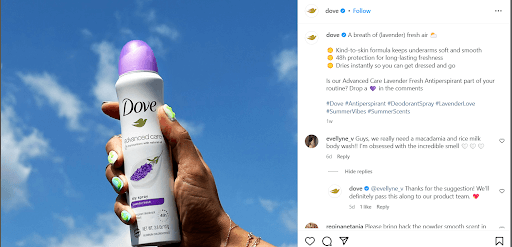If you're a small business owner, attracting local customers is key to growing your business, highlighting the importance of SEO. Whether you're running a café, a boutique, or a service provider, you want the people in your area to find you easily and choose you over the competition. That’s where local SEO (Search Engine Optimization) comes in.
Local SEO helps your business appear in online searches when people are looking for products or services nearby. Think of it as making sure your business pops up when someone searches for something “near me” on Google. Here’s why it’s super important for your business and how you can start using it to get noticed.

The main reason to focus on local SEO is to help your business show up higher in search results when people in your area are looking for what you offer. For example, when someone types in “best pizza near me” or “plumber in [your town],” you want your business to be at the top of the list.
If you aren’t optimizing your website or Google Business Profile, you're missing out on potential customers who are actively searching for services like yours. Local SEO helps you get noticed in these searches, which can land you a spot in the Google Map Pack—that highly visible map and business listing that shows up before any regular search results.
According to Google, 76% of people who search for something nearby on their phone visit a business within a day. That’s a huge opportunity! By optimizing for local SEO, you’re making it easier for people to find your business, see your hours, read your reviews, and get directions—all of which make it more likely they’ll visit you in person.
Local SEO literally puts your business on the map for customers ready to stop by and make a purchase.

Showing up consistently in local search results does more than increase visibility—it builds trust. When potential customers see your business listed at the top of their search, along with solid reviews, it signals that you’re a credible and trusted option in the area.
Encouraging happy customers to leave positive reviews is a great way to boost your online reputation with the local community. Over time, this can help you stand out as the go-to business in your area.
We know it can feel tough to compete with larger businesses with bigger marketing budgets, but local SEO gives small businesses an edge. While national companies might dominate broad searches, local SEO helps you shine when it comes to location-specific searches.
For example, while you might not beat a big-box store for “buy tools online,” with the right local SEO strategy, your hardware store can easily rank at the top for “hardware store in [your town].” Local SEO helps you go toe-to-toe with bigger brands, especially when it comes to your specific area.

Now that you know how important local SEO is, let’s talk about how to implement it. Here are some simple steps to help your business get found by local customers:
This is the big one! Make sure you claim your Google Business Profile and fill it out completely. Add all the relevant details, like your business name, address, phone number, website, hours, and services. Make sure everything is accurate and consistent across the web.
Positive reviews can give your local SEO a serious boost. Encourage your happy customers to leave glowing reviews on Google, Yelp, and other platforms. The more high-quality reviews you have, the better you’ll rank.

Incorporate location-specific keywords into your website’s content. For example, instead of just saying “best bakery,” try “best bakery in [your town]” to help Google understand where you’re located and match you with nearby searches.
Many local searches happen on phones, so your website needs to work well on mobile. Make sure it loads quickly, is easy to navigate, and has all your key info (like contact details and hours) right up front.

Try adding a blog or news section to your website that focuses on local events, collaborations, or other community-related topics. This will help you rank better in local searches and build a stronger connection with your audience.
Local SEO is a game changer for small businesses. It helps you get noticed by nearby customers, build trust in your community, and even compete with bigger brands. If you haven’t started working on your local SEO yet, now’s the time! With a little effort, you can attract more customers, drive more foot traffic, and grow your business right in your own neighborhood.
We offer SEO services in collaboration with our partners at Lucent Creative, a female-led digital marketing agency. Need a hand getting your business on the (local) map? Book a free consultation.
Our friends at Lucent Creative, a woman-owned digital marketing agency, have a few tips for navigating marketing in 2024.
New year, new approach–it’s time to sharpen our content planning game. The days of throwing spaghetti at the wall and hoping it sticks are long gone. In this era of information overload, strategic content planning is the secret sauce for cutting through the noise and capturing your audience's attention.
So, grab your coffee, and let's embark on a journey into the future of content planning.

In 2024, it's all about understanding your audience on a personal level. Consumers are craving content that speaks directly to their needs, preferences, and pain points. Start by diving deep into your audience personas – who are they, what keeps them up at night, and how does your content make their lives better?
Leverage data analytics and social listening tools to gain insights into your audience's behavior. What are they clicking on? What are they sharing? Understanding your audience's digital footprint is key to creating content that resonates. Personalization is the name of the game, and the more you know about your audience, the better you can tailor your content to meet their expectations.
Bonus! Master your social media campaign with this blog post.
Static content is no longer enough; your audience wants to be a part of the experience. From quizzes and polls to interactive infographics and 360-degree videos, the possibilities are endless. Interactive content keeps your audience engaged and invested in your brand.
Make interactive elements a priority in your 2024 content calendar. Host live Q&A sessions, create polls on social media to gather opinions, etc. The more you can involve your audience in the content creation process, the more connected they'll feel to your brand.

In the age of information overload, quality trumps quantity. In 2024, it's not about bombarding your audience with a constant stream of content. It’s about creating meaningful, high-quality pieces that add value. Invest time in researching and producing well-crafted content that solves problems, educates, or entertains. Whether it's a blog post, video, or podcast episode, make it worth your audience's time. Consumers are looking for substance and authenticity.
If video content wasn't at the top of your content planning list before, it should be now. Video content is no longer optional; it's essential for capturing and retaining audience attention. Whether it's short-form content for social media or long-form storytelling on YouTube, video is the medium of choice for many consumers.
Incorporate a variety of video formats into your content strategy. Think about how-to videos, behind-the-scenes glimpses, customer testimonials, and even interactive live streams. Video not only allows you to convey information more dynamically but also helps humanize your brand and establish a deeper connection with your audience.

Bonus! Read about optimizing your blog with video in 2024 here.
Search Engine Optimization (SEO) is still a crucial element of content planning in 2024. The way people search may evolve, but the importance of being discoverable on search engines remains. Keep a keen eye on emerging SEO trends, such as the rise of voice search and the continued emphasis on user experience.
Craft content with relevant keywords, but prioritize natural language and readability. Google's algorithms are getting smarter, and they're favoring content that provides a good user experience. Focus on creating content that answers questions, solves problems, and keeps users engaged – this will naturally boost your SEO rankings.
Artificial Intelligence (AI) isn't just for sci-fi movies; it's a game-changer in the world of content planning. AI can analyze data, predict trends, and even suggest optimizations for your content strategy.
Explore AI-powered tools for content creation, such as automated writing assistance or image recognition for visual content. AI can help you understand what content is resonating with your audience, predict future trends, and optimize your content strategy for maximum impact. It's like having a digital ally that guides you through the ever-evolving landscape of content creation.

From understanding your audience on a personal level to embracing interactive and high-quality content, the rules of the game are evolving. Video is king, SEO is still relevant, and the power of AI and UGC is undeniable. So, roll up your sleeves, stay agile, and embark on your content odyssey armed with the trends that will shape the narrative in 2024.
Need a hand with content in 2024? Get in touch with Lucent Creative’s team of marketing professionals.
Blog posts aren’t obsolete. If so, then we’d be wasting our time writing this and you would be wasting your time reading it, right? Writing blog posts are a great way to increase website traffic, generate leads, and showcase your expertise. Readers also get a closer look at your brand and learn to trust your validity as a service provider or eCommerce store. Of course, not all blog posts are well-written and won’t perform well in a search engine. We teamed up with our partners over at Lucent Creative, a woman-owned digital marketing agency, to bring you the best tips on writing blog posts that convert.
We asked Lucent Creative’s copywriter and content writer Nikki for more insight on the five mistakes to avoid when writing blog posts.

Just because your blog post covers a wide subject doesn’t mean it will pique the interests of a wider audience. Know your ideal reader, or target audience, and create content exclusively for them.
Nikki shared, “It’s tempting to take a trending topic and write broadly about it. If anything, you imagine it would rank well in search engines since it’s a popular subject. The truth is, that you always want to optimize your writing for your ideal customer. There are a lot of books out there, but authors choose a genre, then a sub-genre, and then continue to specify down to the demographic they’re writing for. The same is true for writing blog posts.
Know your audience and know them incredibly well. It affects the language you use when writing, how you speak to their needs, and of course, how successfully your blog performs once it’s out in the world.”
Utilize Alt text on photos and other visuals in your post. It’s not only helpful for SEO optimization but is also considerate of your readers who may be visually impaired.
“The trick with alt text is to keep it concise. Bring out the most vital aspects of the photo with as few words as possible. Thankfully, many stock photo sites have already provided alt text for you.”, Nikki says.
The example below shows that Pexels, a stock photo and video site, provides alt text in the URL. Nikki adds, “Make sure you look at the URL or texts provided by these sites so you can optimize them for your blog. Some photos may have alt text that is too general.”

“Formatting is one of the biggest mistakes people make in their blog posts. Attention spans are short and you want your audience to get the most from your writing at a glance.”
The ideal blog post will be easy to read. Formatting is one of the most important aspects of a blog that performs well.
A call to action is crucial in creating a blog that generates leads. A confused audience won’t take the intended next steps unless you show them how.
“Make sure your CTA matches your blog topic. When writing blog posts, it’s also important to link your CTA to the appropriate page. If your blog is educating the audience on your newest app feature and your CTA is “Download Now”, but the CTA button is linked to the “About Us” page then that complicates the reader’s journey. Your audience will bail if the CTA isn’t seamless.”, Nikki instructs.

This one is huge. Include backlinks in your posts to relative information you have created in the past. Woggle does this often to optimize our posts.

Internal backlinks have multiple perks, including:
Take a moment to think through your current blog content. Are the posts optimized with internal backlinks? It’s an easy fix and we recommend taking time to implement links in your content.

If your team needs a hand optimizing current content or writing blog posts that convert, get in touch with Lucent Creative’s team.
Nikki wraps up our interview with one last gem:
“Helping business owners connect with their audiences is one of my favorite aspects of my job. They have worked hard to build something their passionate about and they deserve to foster the leads they deserve. I get it–writing blog posts is one of those business tasks people don’t necessarily look forward to or enjoy. Thankfully, I love what I do and Kendall’s team is always happy to help.”
Are you reaching your ideal client on social media? An increase in followers doesn’t always mean they’re engaged with your brand. Small businesses can’t ensure a captive audience when readers have an incredibly short attention span. Short of a “please silence your cell phones” message at the movie theater, your marketing team has to engage your audience through intentional content. (Hey, too bad we can’t pop some popcorn for you as you dig through this blog post.)
So, how do you make the most of your social media marketing efforts? We touched on the basics in 5 Ways to Get Strategic in Your Business Marketing, but today we’re going to touch on the importance of engaging your audience.

“I obviously know my audience.”, you say.
We trust you but hear us out.
We’re talking about the difference between knowing your audience and knowing what makes them tick, what their values are, and how you can build trust with them.
Let’s say you run a property management firm for income property owners.
Knowing you’re marketing to middle-aged people in the suburbs is a great start. Dig deeper and you realize that sure, your services are great for a middle-aged audience in the suburbs, but more specifically—those who have an average income of $150k, are close to retirement and want a done-for-them property management company for when they turn their home into a vacation rental and relocate.
Do you see the difference?
It pays to know your ideal client.
When you zero in on your target audience, you gain the ability to:
Pro tip: You may have a few ideal clients. Create a profile for each ideal client so you’re able to hone in on each specified audience in your marketing campaign.

Solidifying your target audience is half the battle. Now, it’s time to lead with customer service best practices. Engaging with your audience is vital for the success of your business. Even in a high-paced world, we all value quality time. We use the word “strategy” loosely here. The main idea is to create a culture of consistent engagement within your marketing strategy.
Here are some standout examples of excellent engagement across social media.

What’s to love?
Dove’s team commented on a suggestion for a new product scent. In less than 30 seconds, they validated their follower’s idea and said they’d pass it along. It’s an amazing example of hearing your out audiences and showing that they matter.

What’s to love?
A follower commented that the post didn’t specify the exact location and Visit San Diego took time to clarify. This simple point of engagement not only helped the commenter but anyone else that may have had the same question. Seems simple, right? Engaging with your audience clears up any misunderstandings.

What’s to love?
Kris replies to a comment saying the salad dressing recipe will be available in a few days. Engaging your audience creates opportunities to build anticipation for a future offer. Taking time to do this doesn’t just build trust with your followers, but gives them a reason to keep checking in.
Engagement with your audience is essential to building rapport with them, but how do you engage? Is it really as simple as replying to comments on social media? The short answer is yes!
We’ve put together some pro tips with our partners over at Lucent Creative.

We hope you’re learning from our social media series. Our partners at Lucent Creative are marketing gurus and we appreciate their help with all things marketing! If you haven’t already, go check out other posts in this series.
What is ECommerce?
As businesses rapidly gravitate to the online space, you’ve likely heard the word “Ecommerce” thrown around, even in casual conversation.
In fact, if you’ve just Googled “What is ECommerce?” under the table on a first date so you can keep the conversation going, we’ve got your back.

Our friends at Shopify put it simply. “Ecommerce, also known as electronic commerce or internet commerce, refers to the buying and selling of goods or services using the internet, and the transfer of money and data to execute these transactions. Ecommerce is often used to refer to the sale of physical products online, but it can also describe any kind of commercial transaction that is facilitated through the internet.”
So, ECommerce is basically an online shop.
There are pretty important nuggets of wisdom you will want to know before you jump headfirst into an ECommerce business. For starters, you’ll want to know how to succeed.
There are a lot of moving parts to ensure any business’ success, but an ECommerce business has its unique needs.
The success of an ECommerce business is heavily reliant on a fully optimized website. After all, the website is the storefront, customer support, and cashier of an ECommerce setup. There are key elements that an ECommerce website must have that go beyond impressive product photos.
To succeed as an ECommerce business, your website needs to be:

Shopify is really the one-stop-shop (see what we did there?) for ECommerce entrepreneurs. Not only does Shopify check off every item listed above, but they make marketing your business effortless right from the app! You can also utilize other sales channels like Walmart Marketplace, eBay, Facebook, and Instagram with Shopify. If you’re wanting to test the waters, let us know here and we’ll sign you up for a free 14-day trial.
There are so many ways to market an ECommerce business. So many, in fact, that you may feel overwhelmed on where you should start. Marketing trends are always ebbing and flowing as algorithms change. At Woggle, we’re all about empowering you with resources and automation so you can keep it simple. ECommerce businesses don’t market themselves, but Shopify can do the heavy lifting for you. Here’s how.
Email marketing is still effective! Yes, even in the world of social media. It turns out that people still want to hear from businesses in their inbox. The proof is in the stats.

Shopify knows the proof is in the pudding (do people still say that?). That’s why they offer email marketing capabilities right in the app. ECommerce businesses can utilize pre-made templates to cut down on time. An added bonus is that you don’t have to hire a designer. Once you have customized your template, Shopify allows you to:
This Shopify marketing feature is one of our favorites. Chatbots are an amazing tool for an ECommerce business to have. They elevate the customer experience by making product recommendations, lending a hand with FAQs, and offering discount codes in real-time.
Are you convinced yet that business chat is the way forward? Like email marketing, Shopify allows customization to your chat and shows you how it is performing in analytics. You can also integrate your chat into Facebook Messenger and other messaging apps. Shopify works seamlessly across various platforms so you don’t have to.
ECommerce businesses rely on ads to get their products front and center. Knowing where to start or even how to start an ad campaign can be a headache. The tricky thing about ads for most ECommerce businesses is figuring out where to advertise. Shopify takes the guesswork out of ads by setting you up for success in their platform.
Being able to advertise, sell, offer customer support, and market from one platform is invaluable to ECommerce business owners. Shopify offers impressive perks when it comes to advertising your products.

Our Woggle team has seen Shopify in action and it’s transforming Ecommerce businesses by increasing their ROI, improving the customer experience, and helping their ads be seen by their ideal customer.
Remember, we can sign you up for a free 14 day trial with Shopify if you’re not ready to commit and want to take it for a test drive.
Woggle is a huge fan of making business simple, and we’re equally as passionate about seeing your business grow! Reach out today, together we'll get everything sorted!
-Off you go! Your horizon awaits.
We’ve known that remote work has been on the horizon for a while, but the COVID-19 pandemic gave everyone a hard shove into the work-from-home lifestyle. Now that we’re starting to recover a bit, it’s clear that many employees want to stay home, and businesses want to avoid the hefty costs of keeping offices open.
Even if moving your staff to full-time remote work isn’t on the table, having a remote work software suite can deliver massive payoffs. Take a second and think of the companies that were “remote ready" in March 2020. Some companies only had to flip the metaphorical switch and send out a mass email telling staff to stay home.
Remote work offers a unique combination of benefits including raised morale and higher retention rates. So why didn't we all welcome remote work sooner? Companies reasonably were worried that working from home would come with security issues, kill collaboration, and cause communication struggles. In comes tech to solve the working world’s problems.
Now, there’s the issue of being overwhelmed with different tech tools and software that claim to be the key to making remote work, well, work. There cannot be one solution. But there are software suites that offer an array of tools and systems to keep your teams running.
We’re pretty lucky that Zoho has an entirely cloud-based remote system that ensures your team can always access the information and systems they need to get things done. You know, as long as they have internet access.
Zoho knows that you have concerns too. Yeah, your employees can get the information they need, but are they really going to work? Seamless reporting helps leaders know that teams are on track with sales goals and other performance metrics.
Worried about choosing the right combination of Zoho systems? Take a breath because Zoho already solved that problem. Zoho Remotely allows your office to function from anywhere with a winning combination of their best remote work apps.
Zoho keeps going. They connect with nearly all the other apps you need to keep your team working, such as:
If you have apps that you already love, chances are you can integrate them with Zoho while cleaning out the apps and processes that are weighing you down.
Because of built-in analytics, Zoho CRM can measure and manage metrics across all of your business operations. Give your sales team powerful tools with one clear path for customer handling in the CRM. Automate escalations to protect customers and support staff while standardizing approval systems to reduce bottlenecks.
Meanwhile, leaders can use customizable dashboards to track team progress, who is landing the most sales, and which campaigns have the most leads.
Remote work software solutions often focus on the CRM to protect the customers' best interest. But, what about everyone else? Don't worry. Zoho has over 45 applications in their suite, and unlike other unnamed software providers, these applications actually integrate beautifully. It's the software suite with apps that know how to work as a team.
So, what do you need to know about Zoho and its many apps?
It doesn't matter if your top talent wants to move across the country or if you need to work while you're on the go. Leaders and staff can collaborate and crush it without being in the same physical space.
Interested in setting up your company for remote working? We'd love to chat with you.
Schedule a Free Consultation today!
-Off you go! Your horizon awaits.
How often have you silenced a phone call from a bogus phone number? Or felt the irritation of hanging up after answering a call to get a voice recording or complete silence? Remember the days when you could slam a phone onto a receiver?

Now our phone frustrations just build-up, and it’s caused a huge issue for businesses. People today don’t want to answer calls, and they abandon calls quickly even if they dialed in!
The common reason behind this is that people simply aren’t willing to wait to speak with a real person. On the other side of the phone, or headset, an employee is trying to do their job. Employees struggle to reach people or access information quickly enough to reduce the chance of a dropped call. It even happens in the office - one ring and then *click* before you can even pick up the phone!
Telephony is the starting point to resolving these issues.
The stuffy answer is, Telephony is a business service which facilitates electronic communication transmissions. But Lieutenant Commander Uhura would put it simply as, “Hailing frequencies open, sir.”
For businesses, implementing a telephony cloud-based phone system can enable you to access high-quality:
All that sounds great, but let’s talk about the big-ticket item. With a telephony system, you can promise customers a reliable contact center.

Using a Telephony system means you can call people right from your computer, and everything happens through a cloud-based service. It’s safe, secure, reliable, and always convenient - that’s why we like it, anyway.
But there are bonuses to calling from your computer that can make your day-to-day life easier. Who would say no to that? You can integrate a telephony system with your CRM. Imagine a world where customer service agents know who is calling before they take the call. Except that’s not even the end of it, the agent receives a link and the matching record in the CRM, so they have all the customer’s history of interactions and more.
At Woggle Consulting, our favorite telephony tech is RingCentral. They’re one of the top telephony options available, whether you’re making calls down the block or across international borders. They focus on bringing together teams and improving customer communications.

Our staff help businesses optimize, maximize, and scale with business solutions, and telephony does just that. It’s secure, often has hundreds of available integrations, and is easily scalable, unlike phone service solutions of the past.
-Off you go! Your horizon awaits.